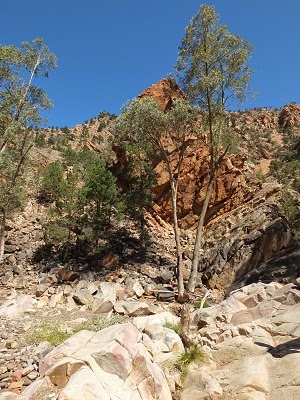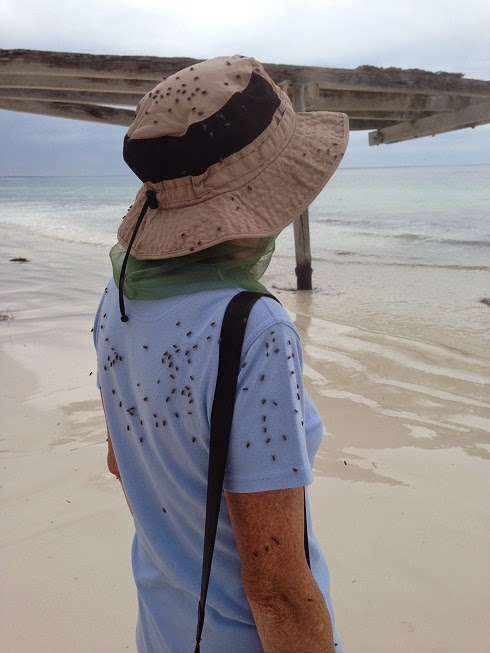8th October 2014
We went north to the edge of the Flinders Ranges to the little settlement of Blinman which claims to be the town with the highest elevation in SA. Hardly a town, the current population is 20. In it's heyday there were 1,500.
 |
Blinman hospital circa 1860's.
For all the non survivors the cemetery was handily right opposite. |
The town sprung up because copper was found in the area and mined extensively between 1862 and 1907 when the mine was abandoned.
The local people have formed a co-operative and restored parts of the mine to a level of safety that allows tours. The mine reaches a total depth of 165 metres with 8 sets of tunnels. The original miners were lured from Cornwall, England and they had a very hard life, The area is very dry, hot in summer, cold in winter and after they had chopped down every tree in a 200km radius they only made it worse.
The original discovery of copper on the surface was made by a one legged shepherd, Robert [peg leg] Blinman. He was smart. Unable to afford the 10 shillings required to take a lease on the land he formed a syndicate with 3 others. They sat on the claim for 3 years then sold the lease to a mining company for 70,000 pounds. Good to hear of the ordinary bloke winning for a change.
 |
| Feral Food advert on road to Parachilna |
 |
| Prarie Hotel, Parachilna |
From here we drove to Parachilna, a town that only existed for maintenance crew on the Ghan railway line. The place is desolate, dead flat, surrounded by low scrub and desert not far away. All that remains now is the old railway station and the pub, which is brilliant inside. The pub is famous for it's 'feral food' menu.
After this we drove back to Wilpena via the Brachina Gorge which is very narrow and at times has a raging torrent flowing through. Rain is either all or nothing around here. Today it was totally dry except a few tiny waterholes on the river bed. The road is rough and follows the river bed in places.
 |
| Many different rocks in Brachina Gorge |
The gorge is famous for it's geology with millions of years worth of rock layers which have been uplifted to about a 45 degree angle then eroded.





















































